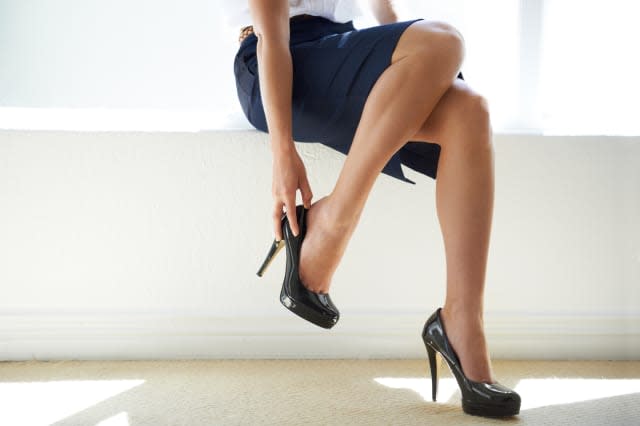High heels aren't the only dress code no-no

Your employer cannot insist on high heels as part of a dress code. That much was made clear in a recent parliamentary report. However, heels are still part of a huge number of dress codes - as are several other things which are legally incredibly dodgy.
See also: How far can your boss dictate your appearance?
See also: What assumptions is your interviewer making about you?
See also: Will the work Christmas party cost you your job?
Heels have taken centre stage recently, after a temporary worker was sent home on her first day for refusing to wear high heels. She launched a petition on the subject, and as a result the Petitions Committee and Women and Equalities Committee issued a report.
It highlighted that although the requirement was illegal under the Equality Act of 2010, "Discriminatory dress codes remain commonplace in some sectors of the economy."
Jonathan Chamberlain, a partner at law firm Gowling WLG, agreed: "In one sense it is extraordinary that this is still an issue some 40 years after sex discrimination was outlawed. Unfortunately, though, it is many women's experience that unspoken conventions are still very powerful. While it is rare for an employer to tell a woman to wear high heels, it can be implied. It means that some organisations in practice have a very different dress code from the ones set out in the handbook."
The report called for the law to be reviewed to make it more effective - possibly with the introduction of more effective penalties for employers who fall foul. A debate will follow in March.
Not just heels
Laura Burnett, Employment Law Team Manager at Citation, says the law doesn't just apply to heels. She explains: "Employers should have a dress code policy in place so staff are aware of what is acceptable attire for work. If there is no policy, then employers should at least make it clear what is the appropriate dress code and should apply this consistently across the workforce. It is important that the dress code doesn't disadvantage employees of a particular sex or religion."
She has produced a guide outlining a number of no-nos. This includes banning religious dress. The only grounds on which items like headscarves and crucifixes can be banned is if it restricts people from doing their job safely or to a fair standard. If it's safe, it cannot be banned.
Employers cannot insist on revealing uniforms either. It is viewed as harassment, and the exploitation of staff. In the past some employers have successfully argued that it is vital to their business, but Burnett says the tide has turned on this.
They cannot insist on gender specific dress either - so they can't ban women from wearing trousers. If someone has formally begun the gender reassignment process, their right to express their acquired gender is also protected.
They can ban shorts, but they need to be careful. If the ban is in place to stop men ditching their suits in the summer, then it needs to apply to women too. If they are allowed to wear tailored shorts to work, then it counts as discrimination against the men.
Interestingly a couple of things are easy for employers to ban. They can, for example, insist that tattoos are covered and piercings removed. They can also insist that women in customer-facing roles wear makeup.
Anyone who is being forced into an unfair dress code can challenge their employer. It's worth noting a case in September 2015 when a woman was employed on a zero hours contract, and when she refused to wear a skirt, she was told she wouldn't be getting any more shifts. She took them to a tribunal, which found she had been the victim of sex discrimination and awarded her £2,500 for injury to feelings and £1,060 in lost wages.




